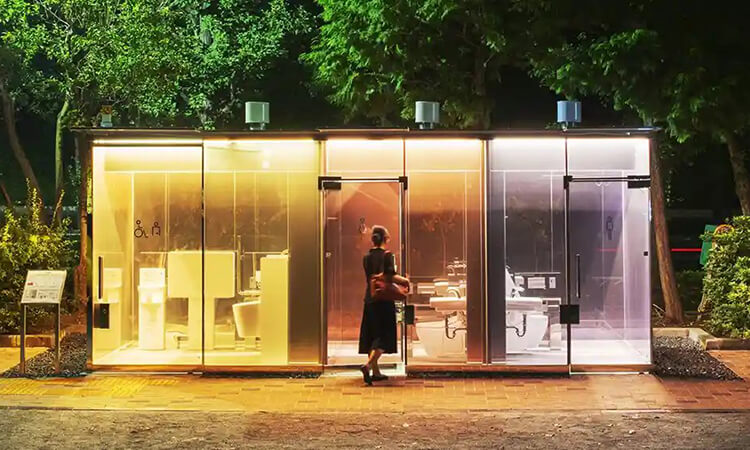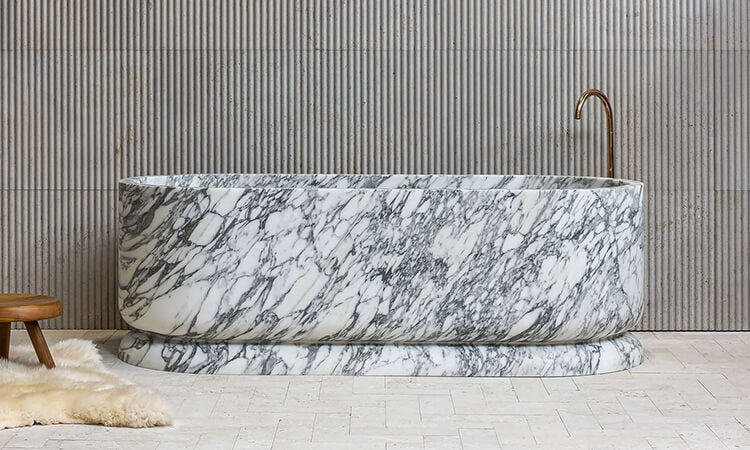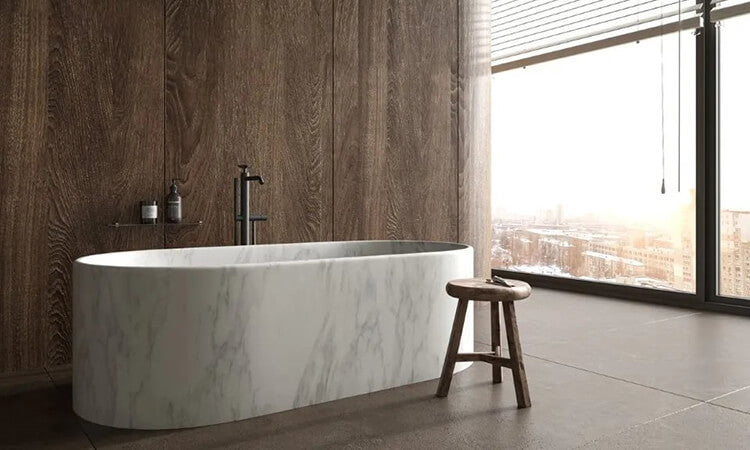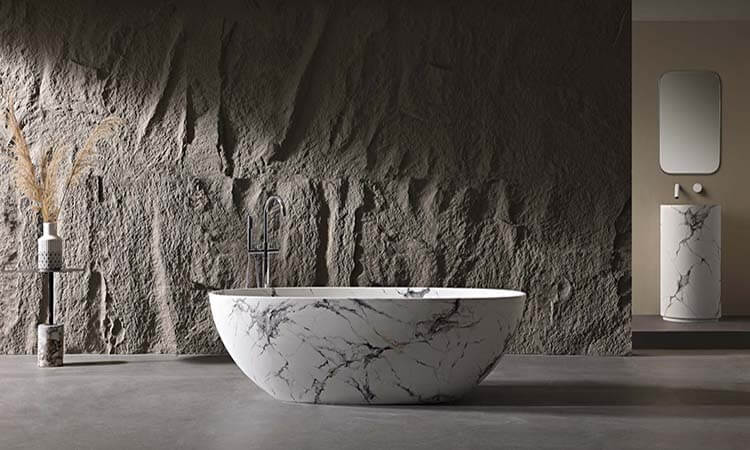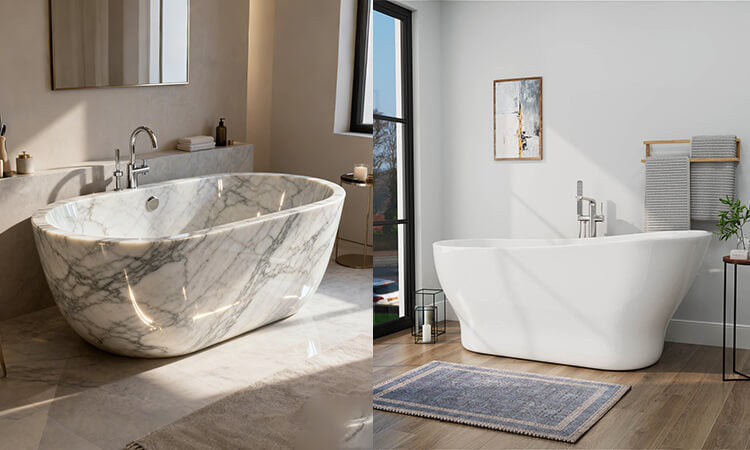Every country has its own unique lifestyle—from how people eat and travel to, yes, how they use the bathroom. Americans often wonder why many Asians prefer squat toilets, while Asians are equally curious about the Western obsession with sitting toilets.
But in recent years, a new kind of toilet born in Japan has taken the world by storm—the Japanese toilet.
If you’re hearing that term for the first time, you might picture something old-fashioned or similar to a squat toilet. In reality, it’s quite the opposite. A Japanese toilet is a sleek combination of technology, comfort, and efficiency, redefining one of the most ordinary routines in daily life: going to the bathroom.
In this article, Giving Tree Home takes a closer look at what makes Japanese toilets so special—their origins, features, and why they’ve become a global favorite in modern bathroom design.
What Exactly Is a Japanese Toilet
Many people use “Japanese toilet” and “smart toilet” interchangeably, but that’s only half true.
Broadly speaking, a Japanese toilet refers to toilets designed according to Japan’s unique bathroom standards and lifestyle habits. Its core philosophy can be summarized in three pillars:
1. Function-Driven Design: From “Basic Need” to “Full-Cycle Comfort”
Unlike traditional toilets that simply handle waste, Japanese toilets enhance the entire process—before, during, and after use:
- Before use: Heated seats prevent that icy shock in winter; automatic lid opening offers a hands-free experience.
- During use: Quiet flushing reduces noise; built-in deodorizing keeps the air fresh.
- After use: Warm-water cleansing replaces toilet paper for a more hygienic finish, followed by gentle warm-air drying—no need to wipe. Many models also feature self-cleaning nozzles that disinfect automatically after each use.
These aren’t gimmicks—they solve real pain points like “cold seats in winter,” “toilet paper irritation,” and “unpleasant noise.”
For instance, TOTO’s first Washlet, launched in 1980, was developed to help people with sensitive skin or health conditions who found toilet paper too abrasive.
2. Space-Savvy & Family-Friendly Design
Japanese homes are often compact, and bathrooms even more so. In addition, multi-generational living—grandparents, parents, and kids under one roof—is common. As a result, Japanese toilets have two signature design traits:
- Compact form: Most models are around 14–16 inches wide, noticeably slimmer than Western toilets (usually 17–20 inches), making them ideal for small bathrooms.
- All-age accessibility: Seat height averages 16–17 inches (slightly higher than standard toilets), which helps seniors sit and stand more comfortably. Some models even feature a “child mode” that lowers water pressure and temperature for younger users.

3. Built on “Eco & Efficiency” Principles
Japan’s limited natural resources have deeply shaped its design philosophy—especially the emphasis on conservation.
- Water-saving: As early as the 1970s, Japan introduced national standards for water-efficient toilets. Today’s mainstream models use only 0.8–1.3 gallons per flush, well below the international average of 1.6 gallons.
- Energy-efficient: Most smart models consume less than 1 watt per hour on standby. Advanced versions use “human detection” sleep mode to cut annual energy usage down to around 8–10 kWh, roughly the same as a small desk lamp.
- Eco-friendly materials: The ceramic glaze is formulated for easy cleaning, reducing the need for harsh chemicals. Some manufacturers even offer partially recyclable toilets, where ceramic and plastic components can be separated for reuse.
How Japanese Toilets Evolved from Basic Fixtures to High-Tech Marvels
The story of the Japanese toilet is really the story of how innovation solves everyday problems. Over the past six decades, what started as a simple plumbing upgrade has evolved into one of the world’s most advanced bathroom technologies. Here’s how it happened—step by step.
1. The Early Years (1960s–1970s): Solving Hygiene and Water Efficiency
During Japan’s postwar economic boom, urban housing expanded quickly—but bathroom facilities lagged behind. Early toilets were basic, noisy, and used enormous amounts of water—up to 3.5 gallons per flush.
That began to change in the 1960s.
- 1960: TOTO released its first water-saving toilet, cutting water use from about 3.5 gallons to 2.4 gallons per flush—marking the birth of Japan’s eco-conscious toilet culture.
- 1970: Panasonic introduced a prototype of the heated bidet seat, designed for seniors and people with medical conditions. It replaced harsh toilet paper with warm water for gentle cleansing—a revolutionary concept at the time.
This era focused on practicality: improving sanitation and conserving water. The idea of “comfort” was just starting to take shape.
2. The Boom Years (1980s–1990s): The Birth of the Washlet
The 1980s were a turning point. In 1980, TOTO officially launched the Washlet, a bidet toilet seat that combined three key features—warm-water cleansing, heated seat, and self-cleaning nozzle—into one product.
That single innovation changed bathroom culture forever.
- Tech innovation: The Washlet used a ceramic thermostatic valve to maintain steady water temperature and an antibacterial coating on the nozzle to ensure hygiene.
- Market adoption: By the late 1980s, Washlets had reached about 15% of Japanese households. By the 1990s, as Japan’s middle class embraced “quality-of-life” products, adoption soared past 30%.
- Competition: Panasonic, INAX, and other brands jumped into the market, sparking an innovation race that transformed the bidet toilet into a must-have household appliance.

3. The Maturity Phase (2000s–2010s): Integration and Energy Innovation
By the 2000s, Japanese toilets had evolved far beyond luxury status. They became standard fixtures, especially in urban apartments. The focus shifted toward energy efficiency, automation, and user experience.
- Expanded features: New models added auto open/close lids, air dryers, deodorizers, and night lights. Many also introduced motion-sensing flush systems, making the entire process fully touch-free.
- Energy upgrades: In 2005, Japan introduced national energy efficiency standards for residential plumbing products. By 2010, TOTO’s “Ultra Water-Saving” toilet used just 0.75 gallons per flush, setting a new global benchmark.
- Market saturation: By the late 2010s, over 70% of Japanese households owned a smart toilet, and apartment complexes boasted nearly 90% adoption. Manufacturers began tailoring models to specific needs—like “emergency-call” toilets for seniors or “cute cover” versions for kids.
4. The Smart Era (2020s–Today): From Comfort to Health Intelligence
In the last few years, as the Internet of Things (IoT) has entered our homes, Japanese toilets have once again evolved—this time toward smart-home integration and personal health monitoring.
- Smart connectivity: Brands like TOTO and Panasonic now offer app-controlled toilets that let users customize water temperature, pressure, and spray position right from their phone. Some models even sync with bathroom mirrors and heaters, automatically adjusting ventilation and temperature when someone enters.
- Health monitoring: In 2022, TOTO introduced a concept toilet that can analyze urine samples for glucose and protein levels, syncing the data to a mobile app. It’s especially useful for seniors and people managing chronic conditions.
- Sustainable materials: Modern units increasingly use bio-based plastics for toilet seats and rainwater recycling systems for flushing—continuing Japan’s long-standing focus on sustainability.
Core Features of Modern Japanese Toilets
1. Automatic Lid Opening and Touch-Free Flushing
The essence of a Japanese toilet is hands-free convenience.
Using built-in infrared or foot sensors, the lid automatically opens when you approach—typically within 12–20 inches—and closes and flushes about ten seconds after you step away.
Higher-end models even include foot-sensing operation, letting you open, flush, and close the lid with a gentle toe tap—ideal for seniors or anyone who just doesn’t want to touch anything.
It’s not just about luxury; it’s about hygiene and accessibility.
2. Heated Seat for Cold Mornings
Almost every Japanese toilet includes a heated seat, powered by carbon-fiber or graphene heating film. It uses around 20–30 watts, warms up quickly, and stays energy-efficient.
Users can adjust the seat temperature anywhere from 82°F to 104°F, depending on personal comfort. Most units have a thermal safety cutoff that automatically shuts off power at around 107°F to prevent overheating.
The seat itself is usually made from high-heat ABS plastic, which stays safe and odor-free even under long-term heating.
3. Warm-Water Cleansing (Bidet Function)
If there’s one feature that defines a Japanese toilet, this is it.
The system works by extending a small self-cleaning nozzle beneath the seat, spraying a gentle stream of warm water that rinses thoroughly and retracts automatically when done.
You can adjust both the water pressure and temperature, and some models even offer pulsating or massage modes for comfort and better hygiene.
For example:
- T2005 supports four pressure levels and a rhythmic massage mode.
- S31-G uses a tankless instant-heating system to prevent bacterial buildup.
- MG-740 includes a detachable self-cleaning spray wand, ideal for female users.

4. Gentle Warm-Air Drying
After washing, a built-in PTC ceramic heater blows warm air to dry you off—quietly and efficiently.
Most units offer multiple heat settings (room temperature, 104°F, 122°F, and 140°F) with noise levels below 45 decibels, which is quieter than an average conversation.
In just 2–3 minutes, you’re completely dry—no paper needed, no waste created.
5. UV Sterilization for Ultimate Cleanliness
Many high-end models now feature UVC sterilization (200–280 nm wavelength) to automatically disinfect the seat and nozzle area.
The result: a 99.9% bacteria-kill rate, effective against common pathogens like E. coli, Staphylococcus aureus, and even coronaviruses.
For families with children or immunocompromised members, this feature provides genuine peace of mind.
Choosing the Right Japanese Toilet
1. Start with Core Features, Then Add Extras
The must-have features are heated seats, adjustable water wash, temperature control, and self-cleaning nozzles.
If your budget is limited, focus on these essentials first. Add-ons like auto lids, app control, or dryers can be nice but aren’t always necessary.
- For seniors or pregnant users: Choose models with foot-sensing lids or gentle low-pressure wash modes.
- For poor ventilation: Get one with an odor filter (usually activated carbon).
- For simplicity: Basic manual-lid models offer great reliability and easier maintenance.
2. Check Installation Requirements First
Before buying, make sure your bathroom setup supports the unit:
- Electrical: Smart toilets require a grounded three-prong outlet near the toilet.
- Water pressure: Most models need at least 7 psi to operate properly. For low-pressure homes (like upper floors), look for versions with a built-in booster pump.
- Fit and spacing: Measure the rough-in distance (usually 12" or 16") and confirm the seat shape (round, D-shaped, or elongated). Tankless one-piece models also need extra clearance behind the seat for fittings.
Skipping these checks can lead to the dreaded “bought it but can’t install it” scenario.
3. Stick with Reputable Brands and Reliable Support
Because these are tech-driven products, after-sales service matters as much as build quality.
- Top smart toilet brands: TOTO (the original Washlet pioneer), Panasonic (balanced and reliable), INAX (great craftsmanship and aesthetics), and Giving Tree Home (modern, minimalist, and value-oriented).
- Warranty: Look for models offering 1–2 years full coverage and 3–5 years on key components like motors or nozzles. Many brands also include free professional installation, which is worth confirming upfront.

Maintenance Tips: Keep Your Smart Toilet in Top Shape
Clean regularly:
- Wipe the seat and nozzle weekly using mild, non-acidic cleaners. Avoid bleach or abrasive pads.
- Use alcohol-free wet wipes for daily cleaning and focus on the seat joints where dirt builds up.
Avoid misuse:
- Don’t touch the nozzle by hand or place heavy objects on the tank or lid.
- Never pour boiling water for cleaning—it can damage internal seals and heaters.
Replace consumables:
- Change water filters every 6–12 months, depending on water quality.
- Check the floor seal annually for leaks or odor.
- Replace remote batteries every 1–2 years with good-quality alkaline batteries.
Troubleshoot small issues safely:
- No hot water? Check temperature settings or reset power.
- Weak spray? Ensure no blockages or low water pressure.
- Weak flush? Confirm the inlet valve is open or tank is full.
If the problem persists, don’t disassemble—call professional support.
Ending
From heated seats to silent flushing and antibacterial designs, every feature of a Japanese toilet exists for one reason—to make daily life cleaner, calmer, and more comfortable.
It’s not just about technology; it’s about human-centered design. It allows seniors to use the bathroom safely, women to feel more hygienic during sensitive days, and everyone to enjoy warmth and cleanliness even on the coldest mornings.
At its core, choosing a Japanese toilet is about choosing a better lifestyle. You don’t need to buy the priciest or most feature-loaded model—just one that fits your home, your family, and your habits.
And that’s exactly why, decades after its invention, the Japanese toilet continues to win hearts and bathrooms around the world.


